Intel Core i7-3960X Sandy Bridge-E Processor Review
The Intel X79 Express Chipset & DX79SI Mobo
In order to understand the Intel X79 platform it is best to take a look at the motherboard chipset that is going to be used.
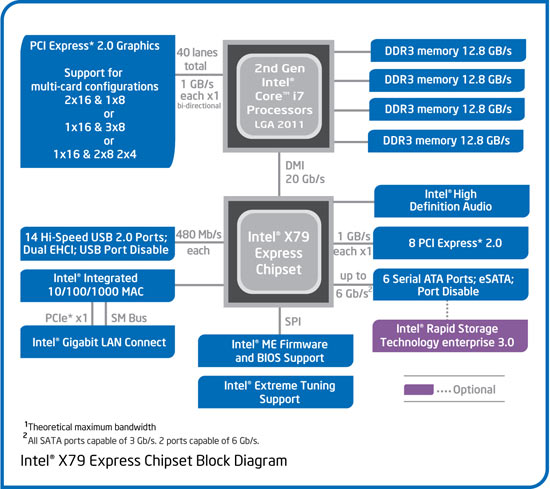
The Intel X79 Express looks familiar as it is very similar to the Intel Z68 Express Chipset that is shown below. The main difference between the two platforms is, of course, the sockets. The Intel X79 platform only supports LGA2011 Sandy Bridge-E processors and those processors have 40 lanes of PCI Express 3.0 links capable of 8.0 GT/s,
and 4 lanes of DMI2/PCI Express 2.0 interface with a peak transfer rate of 5.0 GT/s. Intel doesn’t come out and say this board supports PCI Express 3.0 video cards, but once those cards hit the retail market we expect this board to be fully compliant.
The Intel X79 chipset supports Quad Channel DDR3 Memory architecture, so expect to see ~40GB/s of memory bandwidth on new systems using this platform! Intel has updated their Rapid Storage Technology, but we haven’t gotten a chance to try it out, yet. The Intel RSTe 3.0 driver package was designed with a default setting that was optimized for additional data protection needed for data center storage configurations. The software is still in the early stages and the official release of the Intel RSTe 3.0 driver package is trending to WW49 (week of Nov. 28th). Speaking of storage, Intel does not offer Smart Response Technology (SSD Caching) on the X79 chipset.
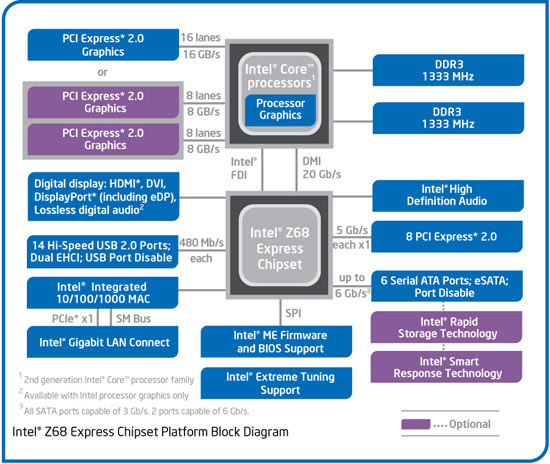
The Intel X79 Express chipset supports 40 lanes PCI Express 2.0 for the
Graphics, while the Intel Z68 Express supports only 16 Lanes for the
Graphics. This means that while the Intel Z68 platform can run dual
graphics, the Intel X79 Express Chipset will support up to five graphics
cards in a 1×16, 2×8, and 2×4 configuration. One of the features that
was not included on the Intel X79 platform is the Intel Smart Response
Technology. We aren’t terribly surprised that it isn’t included; after
all, if you are paying $999.00 for the Intel Core i7 3960X you will
likely be using a good sized SSD for your boot drive.
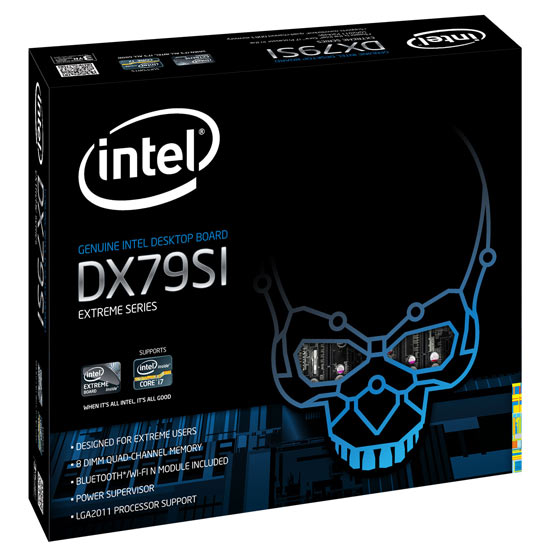
Intel sent over the DX79SI ‘Siler’ motherboard, which is their top end X79 motherboard. This board will be priced between $280 and $300 when it hits the retail market, which makes it priced on the lower end of the spectrum from what we can tell.
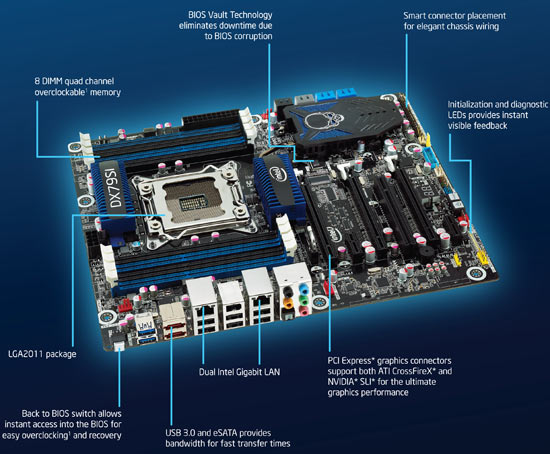
This board is packed full of features like 8 DDR3 DIMM slots, dual Intel Gigabit LAN and support for both NVIDIA SLI and AMD Crossfire multi-GPU setups.
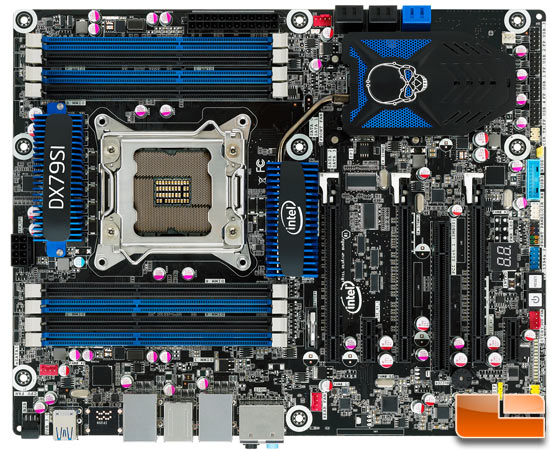
The PCI Express slots are spaced far enough apart that you can run three double slot graphics cards on the board at the same time for 3-way SLI or CrossFire as well!

Expect to see more about this board when we fully review it at a later date!

Comments are closed.